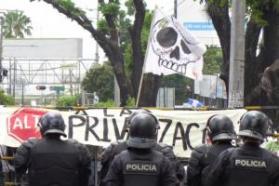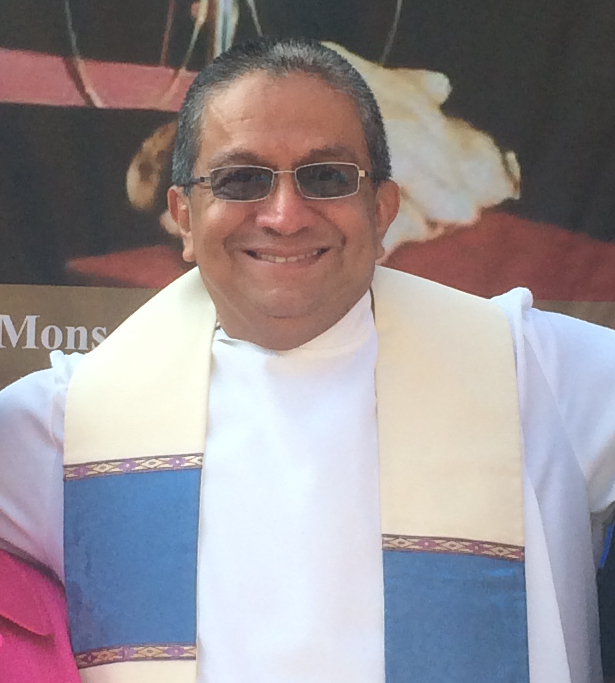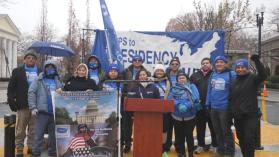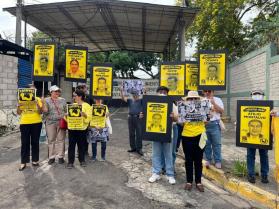30 Years Strong, CISPES Model Stands the Test of Time
by Edy Rees, Boston CISPES
I first became involved with CISPES in the mid-1980s while living in Brooklyn, New York. There was some coverage of CISPES activities on WBAI, listener-sponsored radio, and then I met some folks from CISPES at a city-wide conference sponsored by WBAI and The Guardian, a progressive weekly newspaper thenpublished in NY. I had always been aghast at US involvement in Central America, and back in the 1960s,while living in Boston I had been marginally involved with NACLA (North American Congress on Latin America), mostly clipping articles about Latin America from Boston papers and sending them to the NACLA Washingtonoffice. Although El Salvador is such a tiny country, it did then and still seems pivotal in terms ofdemonstrating how people can push back against US domination and develop a progressive political awareness. The folks in CISPES described the urgency of El Salvador’s fight for liberation and invited people like me to join them in activities that were accessible on various levels, and held out a credible hope for victory.
Iwas soon attending meetings and demonstrations, doing “stand-outs” and tablingwith CISPES. That was the firsttime I saw people use ironing boards as tables - they were light-weight enoughto carry on the subway, plus they could be set up and taken down inminutes. Within a few months ofgetting involved in CISPES, I began working at a new job as a tenantorganizer. Although I’d been doingtenant and other community organizing off and on for several years by then, itwas exciting to learn some of the CISPES method, which still works really wellfor any type of organizing. Thecareful analysis, planning and prioritizing encouraged by the CISPES methodmade me a much better tenant organizer; and today there are hundreds of tenantsin Brooklyn who wrested their buildings from the clutches of slumlords. Thesetenants, mostly Latino, now own their buildings collectively and probably don’trealize they owe some of their success to the CISPES method (in addition totheir own bravery, brilliance and creativity).
NYCISPES in the 80s was large, creative and lots of fun. At one of ourdemonstrations in front of the Salvadoran Consulate, some of our folks managedto enter the building and hang a large CISPES banner from the second floorwindows, declaring that the Salvadoran people wanted to be free. It was up there for several minutesbefore the Consulate staff removedit, but not before lots of people got pictures.
Oneyear we entered the Macy’s Thanksgiving Day Parade with our own huge, heliumballoon bomb labeled, “No more bombs for El Salvador!” Although that wasshorter-lived than the sign at the Consulate, it was aired on nationaltelevision. Yet another success from the CISPES model!
Iattended some great regional meetings/trainings, one in Philadelphia andanother in New Brunswick, NJ, which were like mini-courses on what washappening in El Salvador, and how we could best support the movement there. Itwas always so empowering to us as activists to meet with CISPES folks fromother cities, and to build on each others’ energies and ideas. It’s exciting toknow that these national and local gatherings are still happening today.
InNovember 1988, hundreds of us blockaded the Pentagon and got arrested (seehttp://cispes30years.org), protesting US military aid to the right-wingSalvadoran government . After that, I went on a delegation to El Salvador,where we met with farmers, labor leaders, students, women’s groups and membersof the FMLN. They were excited to hear about US protests and other CISPESactivities, and we were deeply moved and inspired by their stories, theircourage and their ingenuity. Beingin FMLN-held Chalatenango felt like the first time I’d ever really been in ademocracy, and returning to New York felt like going back to enemy territory.
AlthoughI continued to be active with CISPES into the 1990s, I stopped when I took on a new jobworking with homeless people with AIDS that took over my life for severalyears. In 1997 I returned to Boston to work as a social worker - another jobthat left no time or energy for much else. But I rediscovered CISPES in April 2009, when I attended aspeaker’s panel on the incredible presidential victory in El Salvador. Afterthat, I became quite active again, helping to organize the 2009 Victory Tourthrough Boston, participatingin CISPES Ed nights and the 2009 Convention decision-making process. Although family commitments have sloweddown my involvement, I’m still active and committed to the struggle.
SinceI first got involved in the 1980s, CISPES has grown smaller - but CISPESremains a vital, effective organization. And the CISPES method of grassroots organizing is still the most effectiveway to support peoples’ liberation struggles. I thank CISPES for thoseinvaluable organizing lessons, which I see developing in today’s CISPES membersand organizers, more than 20 years later.

 "I am a CISPES supporter because continuing to fight for social justice and a more people-centered country means continuing the dream and sacrifice of thousands of my fellow Salvadorans who died for that vision.” - Padre Carlos, New York City
"I am a CISPES supporter because continuing to fight for social justice and a more people-centered country means continuing the dream and sacrifice of thousands of my fellow Salvadorans who died for that vision.” - Padre Carlos, New York City

